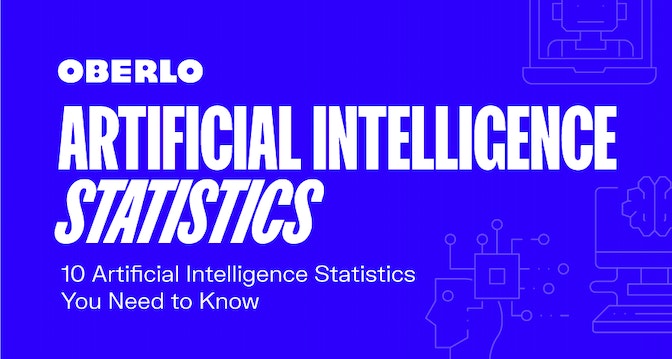Read a bit about customer lifetime value, and it might sound too complicated for those of us in the scrappy ecommerce merchant demographic.
AGoogle Think blog post, for example, says that customer lifetime value requires getting “internal and external teams aligned.” Over atForbes, you’ll read about how “companies that put a heavy emphasis on [lifetime value] are also the ones that have massive losses as they scale, frequently even through an IPO.”
Internal and external teams? IPOs? And if you thinkthat’srough, check out what DataScience.comhas to sayabout customer lifetime value: “The latent parameters λ and μ are constrained by two prior gamma distributions representing our belief of how these latent parameters are distributed among the population of customers.”
Yikes.
But there’s no reason to be intimidated by customer lifetime value, or CLV. Is it complex? Sure. Was it created with small online stores in mind? Definitely not. But customer lifetime value can still help you make informed decisions about your profit margins, as well as how to allocate your energy between retaining existing customers and finding new ones.
This post will explain, in the simplest terms possible,what customer lifetime value is. Then we’ll look at how you can calculate customer lifetime value for your store, and what you can do to move your store’s average customer lifetime value in the right direction.
What Is Customer Lifetime Value?

Today we’ll keep things basic, looking at simple formulas for historic and predictive customer lifetime value.
Here’s how historic customer lifetime value looks:
(Annual profit per customer x Average customer lifespan in years) – Cost of acquiring customer
Let’s see an example of that might look in action. Say you have:
- $750,000 in annual revenue
- $600,000 in annual non-acquisition costs
- 1,500 customers
- An average of three years per customer
- An average cost of $50 per acquisition
With that as our backdrop, we can start filling in the blanks.
Annual profit per customer = ($750,000 – $600,000) / 1,500 = $100
Average customer lifespan = 3
Initial cost of acquiring customer = $50
($100 x 3) – $50 = $250
This is a crude formula: It’s purely retroactive, and it doesn’t account for so many of the variables that might help informfuturemarketing decisions. But there are ways we can play with historic customer lifetime value to get more out of it. We’ll get there right after we talk about…
Predictive Customer Lifetime Value

Predictive customer lifetime value is where things get complicated. For this, we are supposed to account for both retention rate and discount rate. But we can only do that after we’ve come up with a number for “gross margin per customer,” which itself is only available after we find determine our average gross margin.
One step at a time. First, let’s find that gross margin per customer, which is foundational to the predictive customer lifetime value formula. Gross margin per customer looks like this:
GML = ((T x AOV) AGM) ALT
Okay, that’s a lot of letters. Let’s take a step back and look at it piece by piece.
- T = Average number of transactions (per month)
- AOV = Average order value
- AGM = Average gross margin
- ALT = Average customer lifespan
T and AOV are pretty clear. AGM and ALT could use a bit of unpacking.
AGM, or average gross margin, is your total sales revenue minus the costs of goods sold, then divided by total sales revenue. That make sense? So we’ll end up with a percentage. Here’s an example:
($75,000 total sales revenue – $60,000 cost of goods sold) / $75,000 = 20%
So if this example store with $75,000 in monthly revenue has an average of 5,000 monthly orders and an average order value of $15, then the equation would look like this:
((5000 x 15美元)* 2)ALT =
($75,000 * .2) ALT =
$15,000 x ALT
Of course we need to make this customer lifetime value calculation per customer. So we would divide$15,000 x ALTby the number of customers you have. Let’s say we have 2,500 customers making those 5,000 purchases, and these customers have an average lifespan of four years, or 48 months.
($15,000 x 48) / 2,500 = $288
Now, about average customer lifespan, or ALT. This one is tough — especially for ecommerce stores like the one you might run.
For starters, your store might not be old enough to really calculate an average customer lifespan. Even if you have, say, four years under your belt, how much do you trust that first-year data? Chances are that your customers in Month 1 had a different experience than a customer who converted for the first time last week. And who knows, maybe your products are completely different than they were at the beginning.
Bottom line, ALT is tricky to calculate. Just remember that changing this variable — the goal, of course, would be to make the average lifespan longer — can have a huge impact on the lifetime value of your customers: A good customer for three years is more valuable than a good customer for one year.
The next step to predictive future customer lifetime value, if you want to take it, requires dropping this gross margin per customer (GML) into a formula that accounts for retention rate and discount rate.
You can see how deep this customer lifetime value rabbit hole goes. Retention rate all by itself is an absolute monster,as explained here. Add discount rate to that, and we’re looking at loads of work — and possibly loads of guesswork — to find customer lifetime value.
At any rate, if you want to go further down the rabbit hole, here’s the path:
Customer lifetime value = GML (R / (1 + D – R))
R is monthly retention rate, and D is monthly discount rate. Both of these numbers are tricky to calculate. For example, do all of your customers receive the same discounts? If not, do the ones who receive more discounts have a higher retention rate?
Customer Lifetime Value: Playing With the Variables

Alright, so we know the elements that make up customer lifetime value. Or at least the elements that make up certain versions of customer lifetime value. Now let’s look at how you can play with the variables and how that would impact your store.
First let’s revisit historic customer lifetime value:
(Annual profit per customer x Average customer lifespan in years) – Cost of acquiring customer
There are ways to dig deeper into this formula. We could, for instance, look at the “initial cost of acquiring a customer” variable per channel. That would tell us the customer lifetime value of customers acquired via Facebook, via SEO, and so on.
After all, not all channels are created equal: Maybe your blog drives tons of SEO traffic to your site on the cheap, while on Facebook your cost-per-click continues to climb. Then again, maybe your Facebook customers spend more money once they convert.
With customer lifetime value, we can determine if the accelerated acquisition costs on a certain channel are worth it.
Here’s how a historic per-channel calculation might look:
- 1,500 customers: 750 from Facebook, 750 from search
- $750,000 in annual revenue: $500,000 from visitors acquired via Facebook, $250,000 via search
- $600,000 in annual non-acquisition costs: $400,000 for Facebook, $200,000 for search
- Average of three years per customer
- Average of $50 acquisition cost: $90 Facebook, $10 search
Facebook:
年度利润contribution = ($500,000 – $400,000) / 750 = $133
Average number of years they are a customer = 3
Initial cost of acquiring customer = $90
($133 x 3) – $90 = $309
SEO:
年度利润contribution = ($250,000 – $200,000) / 750 = $67
Average number of years they are a customer = 3
Initial cost of acquiring customer = $10
($67 x 3) – $10 = $191
As we see here, even if an acquisition channel is more expensive, it might be totally worth it if customers acquired from that channel spend more money. Obviously there is no rule that says customer acquired via Facebook will spend more than customers acquired via search. But we can see how a per-channel look at customer lifetime value can impact your marketing spend.
Here’s how customer lifetime values would look if customers acquired via search spent the same as those acquired via Facebook.
Facebook:
年度利润contribution = ($375,000 – $300,000) / 750 = $100
Average number of years they are a customer = 3
Initial cost of acquiring customer = $90
($100 x 3) – $90 = $210
SEO:
年度利润contribution = ($375,000 – $300,000) / 750 = $100
Average number of years they are a customer = 3
Initial cost of acquiring customer = $10
($100 x 3) – $10 = $290
All of a sudden, search drives a bigger customer lifetime value.
Let’s play with another variable — customer lifespan. What if your Facebook campaigns led to more one-time, impulse purchases, while your SEO-driven purchases resulted loyal, longer-lasting customers? Let’s say Facebook customers last one year, and SEO customers last five years. The annual spending is the same — but not the length that they are your customer. What does that do to the customer lifetime value of people from these channels?
Facebook:
年度利润contribution = ($375,000 – $300,000) / 750 = $100
Average number of years they are a customer = 1
Initial cost of acquiring customer = $90
($100 x 1) – $90 = $10
SEO:
年度利润contribution = ($375,000 – $300,000) / 750 = $100
Average number of years they are a customer = 5
Initial cost of acquiring customer = $10
($100 x 5) – $10 = $490
SEO把Facebook。当然一年/ 5 split might be unrealistic. But this goes to show how turning the dial on one of these variables totally changes the expected customer lifetime value.
We could also apply a country segment, or identify cohorts whose first purchase was three years ago, two years ago and this year. There are all sorts of ways to adapt this equation to get richer historic insights.
The same math games can be used for the predictive customer lifetime value formula. One unique element of the predictive formula we looked at is average gross margin. Let’s take a look at how changes to average gross margin might impact the overall customer lifetime value.
We could increase our average gross margin by finding a cheaper supplier, or by increasing prices. Let’s try raising prices. That would make our total sales revenue higher.
Here’s the original:
($75,000 total sales revenue – $60,000 cost of goods sold) / $75,000 = 20%
Here’s with 20 percent higher prices:
总销售收入(90000美元- 60000美元的成本粘性ds sold) / $90,000 = 33%
Now our store has $90,000 in monthly revenue on its 5,000 monthly orders, good for $18 per order.
((5,000 x $18) * .33) avg. customer lifespan
($90,000 * .33) ALT
$30,000 x ALT
Of course turning the dial up on one thing, like profit, might turn the dial down on another, like average customer lifespan: If you are charging more money for the same products, then your customers might not stick around as long.
There are tons of tradeoffs like this. For example, you could get more aggressive with social media advertising to drive up the average number of monthly orders, but doing so might drive down our friend AOV, average order value. It might also be possible to increase the average customer lifespan by offering discounts to returning customers. That, though, could take a bite out of sales average margins.
Conclusions on customer lifetime value
You don’t need perfectly accurate numbers to get insights from customer lifetime value. Sure, what we’ve looked at here wouldn’t impress a data scientist. But there are still nuggets that you can take from these customer lifetime value equations.
- Historic customer lifetime value is super easy to calculate. While you might have to do some guessing on the average customer lifespan, especially if you have a young shop, you can still get a ballpark estimate for how much you have gotten to date from existing customers.
- With the predictive customer lifetime value formula, we’re still guessing customer lifespan. Meanwhile, retention rate and discount rate introduce a whole web of either (a) guesswork or (b) seriously hardcore math that you might not want to dive into.
- Even with the imprecise nature of these customer lifetime value formulas, they offer us a valuable guide. Customer lifespan might be unknown, but the amount of money your customers spend, the source that brought them to your website, the country their order shipped to — that data is all available. Your marketing spend per channel is also recorded. Use the concrete numbers at your disposal and make your best guess where necessary.
Want to learn more?
50 Ways to Get Sales With Dropshipping [ebook]



